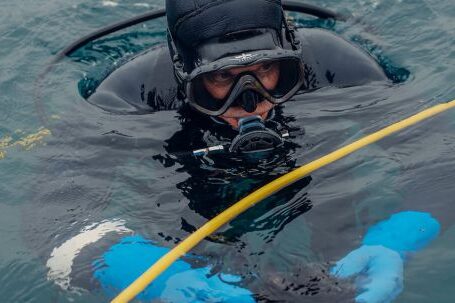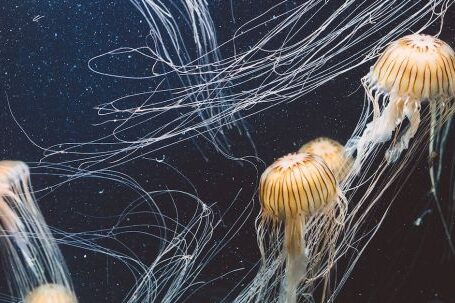The deep blue sea holds a vast array of fascinating creatures, each with its own unique behavior and characteristics. From the graceful movements of dolphins to the camouflage techniques of octopuses, the underwater world never fails to captivate and intrigue. In this article, we will delve into the mysterious behavior of marine creatures and explore the secrets they hold.
The Dance of the Dolphins: Communication and Social Bonds
Dolphins are known for their playful and social nature, but there is more to their behavior than meets the eye. These intelligent creatures communicate through a complex system of clicks, whistles, and body movements. Studies have shown that dolphins use signature whistles to identify themselves and maintain social bonds within their pod. They also engage in synchronized swimming, a behavior known as “porpoising,” which is thought to strengthen social bonds and facilitate hunting.
The Camouflage Masters: The Art of Disguise
Octopuses, with their ability to change color and texture, are masters of disguise. They use this remarkable skill not only for protection but also for hunting. By blending seamlessly into their surroundings, octopuses can approach their prey undetected. Some species even go a step further and mimic the appearance of dangerous predators to ward off potential threats. The exact mechanism behind this camouflage ability is still a mystery, but scientists believe it involves specialized cells called chromatophores.
The Enigmatic Migration: Navigating the Great Unknown
Migration is a behavior observed in many marine creatures, from whales to sea turtles. These animals undertake long and often perilous journeys, guided by instincts and environmental cues. For example, the humpback whales travel thousands of miles each year to their breeding grounds. How they navigate across vast stretches of open ocean without getting lost remains a mystery. Scientists speculate that these creatures may use a combination of magnetic fields, celestial cues, and memory to navigate their way.
The Bioluminescent Symphony: Illuminating the Depths
One of the most awe-inspiring behaviors in the marine world is bioluminescence—the ability of certain organisms to produce light. From tiny plankton to deep-sea fish, bioluminescence serves multiple purposes, including communication, camouflage, and attracting prey. The mechanisms behind this phenomenon vary among species, but they often involve the production of light-emitting chemicals within specialized cells. Scientists are still unraveling the secrets of bioluminescence and its role in the marine ecosystem.
The Deep Divers: Surviving Extreme Conditions
The deep ocean is an inhospitable environment, with extreme pressures, freezing temperatures, and limited resources. Yet, some marine creatures have adapted to thrive in these conditions. The deep-sea anglerfish, for example, possesses a unique adaptation—a bioluminescent lure that attracts prey in the darkness. Other deep-sea organisms have developed specialized enzymes and proteins that allow them to withstand the crushing pressures and low temperatures. The study of these deep divers provides valuable insights into the limits of life on Earth.
Unlocking the Secrets: The Importance of Marine Research
Understanding the behavior of marine creatures is not only fascinating but also crucial for the conservation and management of our oceans. By studying their behavior, scientists can gain insights into their ecological roles, population dynamics, and responses to environmental changes. This knowledge is essential for developing effective conservation strategies and ensuring the long-term survival of these remarkable creatures.
In conclusion, the mysterious behavior of marine creatures continues to captivate our imagination. From the communication of dolphins to the camouflage of octopuses, the underwater world is full of secrets waiting to be unlocked. Through scientific research and exploration, we can shed light on these mysteries and deepen our understanding of the fascinating creatures that inhabit our oceans.





